
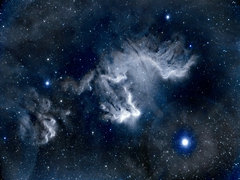
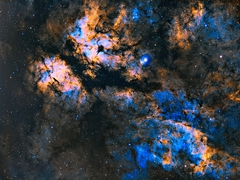




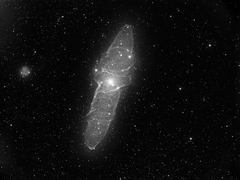

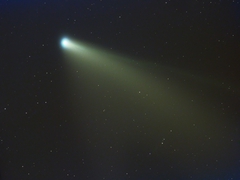

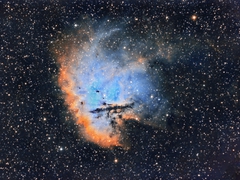
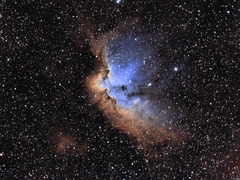

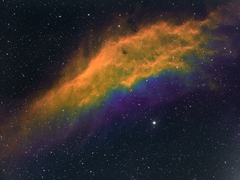
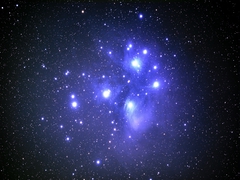
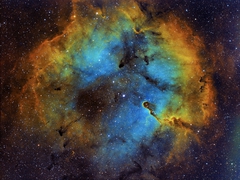
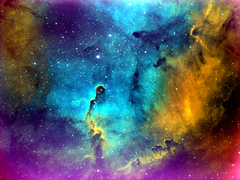

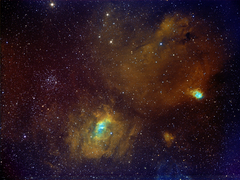
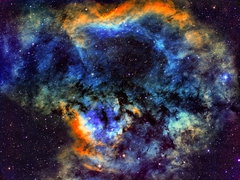
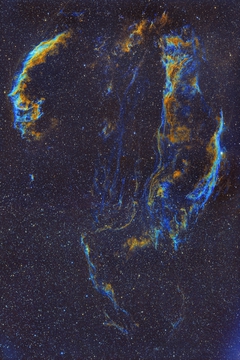
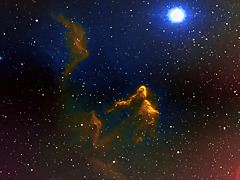
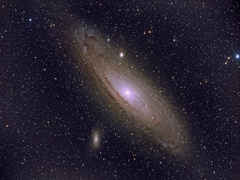
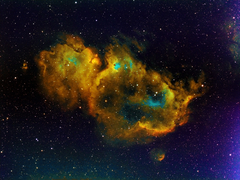

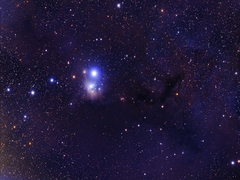
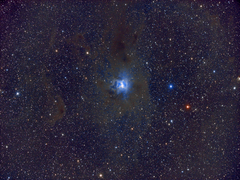
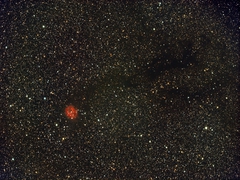
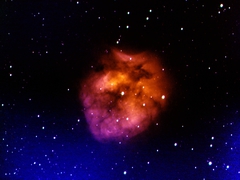
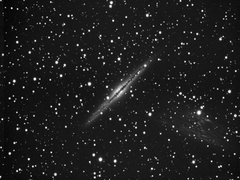
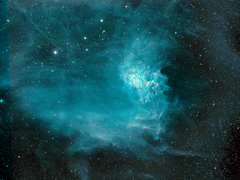

Extensive technical details and descriptions of each capture may be gotten from my AstroBin. Astrophotographs taken using any of the equipment set ups using scope1 (at home) are at the top grouped according to high (16-24 MP) and low (~0.5-1 MP) resolution, followed by astrophotographs taken using scope0 (remote observatory). The object title (hover mouse over thumbnail for a pop up), the telescope, and other information are available in the complete path of the filename or within the astrophotograph coded based on the numbers in the equipment page. For example, scope/1.6.4.5 refers to an astrophotograph taken at home (scope1) using the Takahashi FS128 flourite doublet apochromat on a Paramount MyT and the QHY163M camera, and "c-sho-hubble" means that the narrowband astrophotograph is coloured using a SHO mapping (red = S2; green = Ha; blue = O3) and colours are modified further to resemble the Hubble palette. A list of objects I've observed visually is also available.
Several astrophotographs have been recognised as Astonomy Picture of the Day on The Sky Searchers forum; a couple of them have been made top picks on AstroBin; the astrophotograph of the NGC7822 nebula and open cluster in Cepheus was selected as Stellar Shot of the Week with an original writeup; and the astrophotograph of the IC1396 Nebula including the Elephant's Trunk was selected as a National finalist for the 2019 Wiki Science Competition to be represented in the International competition and also promoted to quality image status. My astrophotographs of the Jellyfish and Heart nebulae were promoted to a featured image here and here on Wikimedia Commons; the former also featured on Wikipedia highlighting it as one of its finest images.
The image of the Jellyfish Nebula was selected as the first place winner in the 2021 International Wiki Science Competition in the astronomy category. The images of Sharpless 216 (also promoted as a quality image as well as a featured picture) and the Heart nebula (featured picture) were runners-up. This was also reported on Facebook, Instagram, Twitter, and LinkedIn.
Previously, the Jellyfish Nebula was honoured with the Jury's Prize in the 2021 National Wiki Science competition in the astronomy category and will be selected to represent the US in the International Competition along with three other images that were also selected as finalists (Heart nebula, Sharpless 216, NGC 7822).